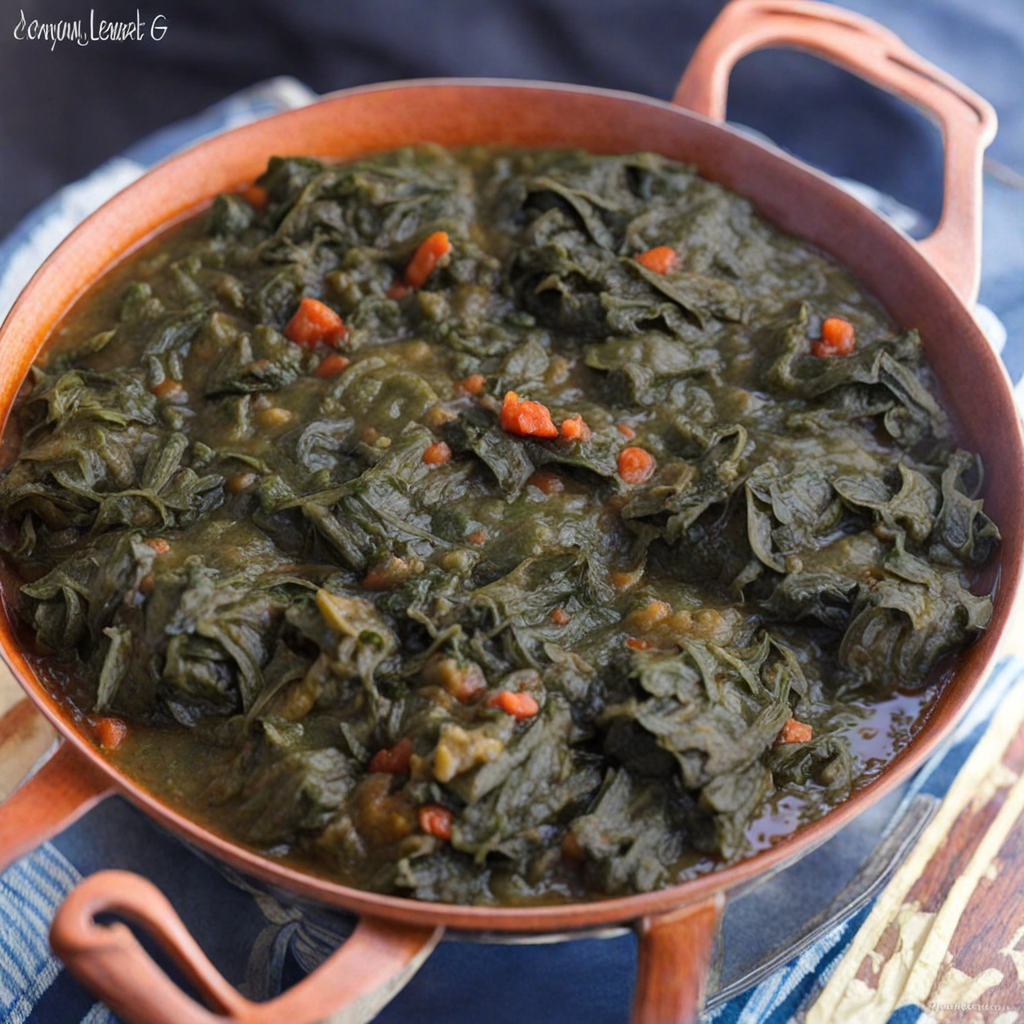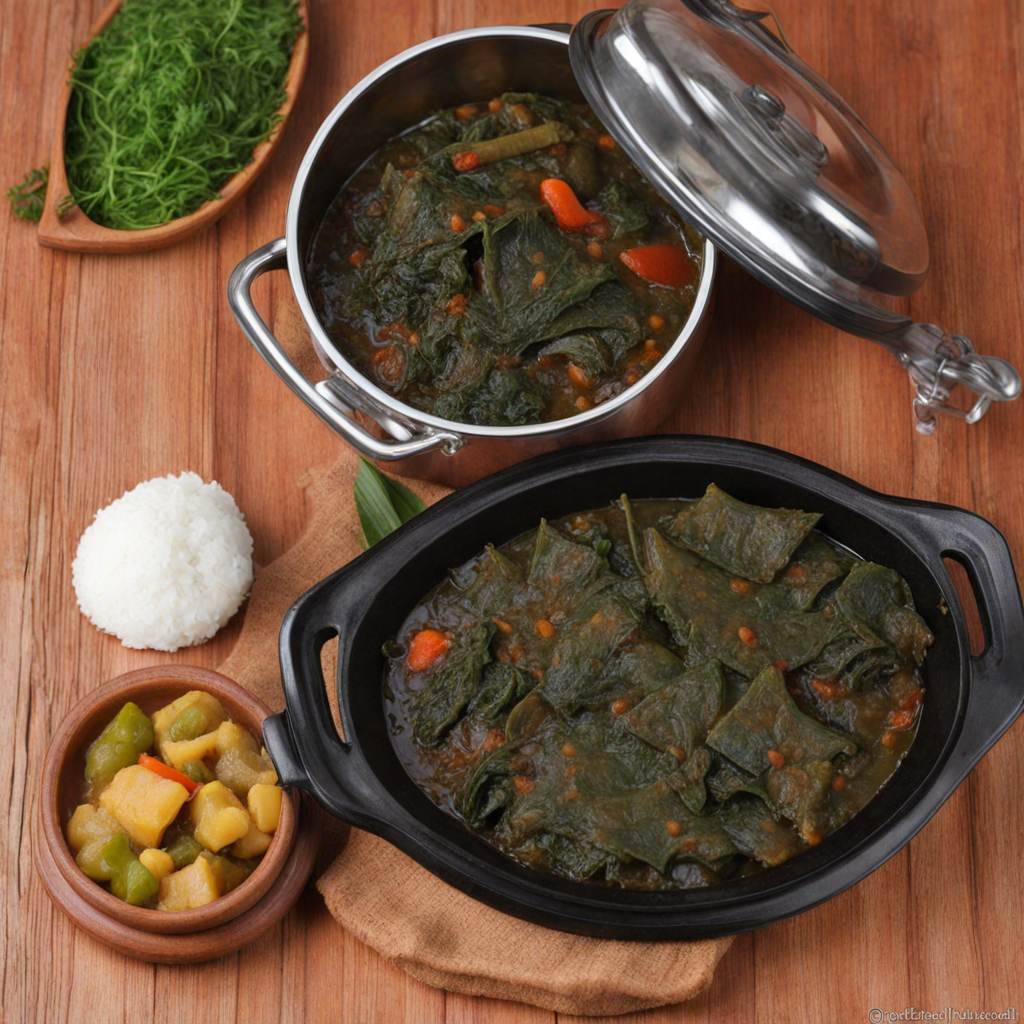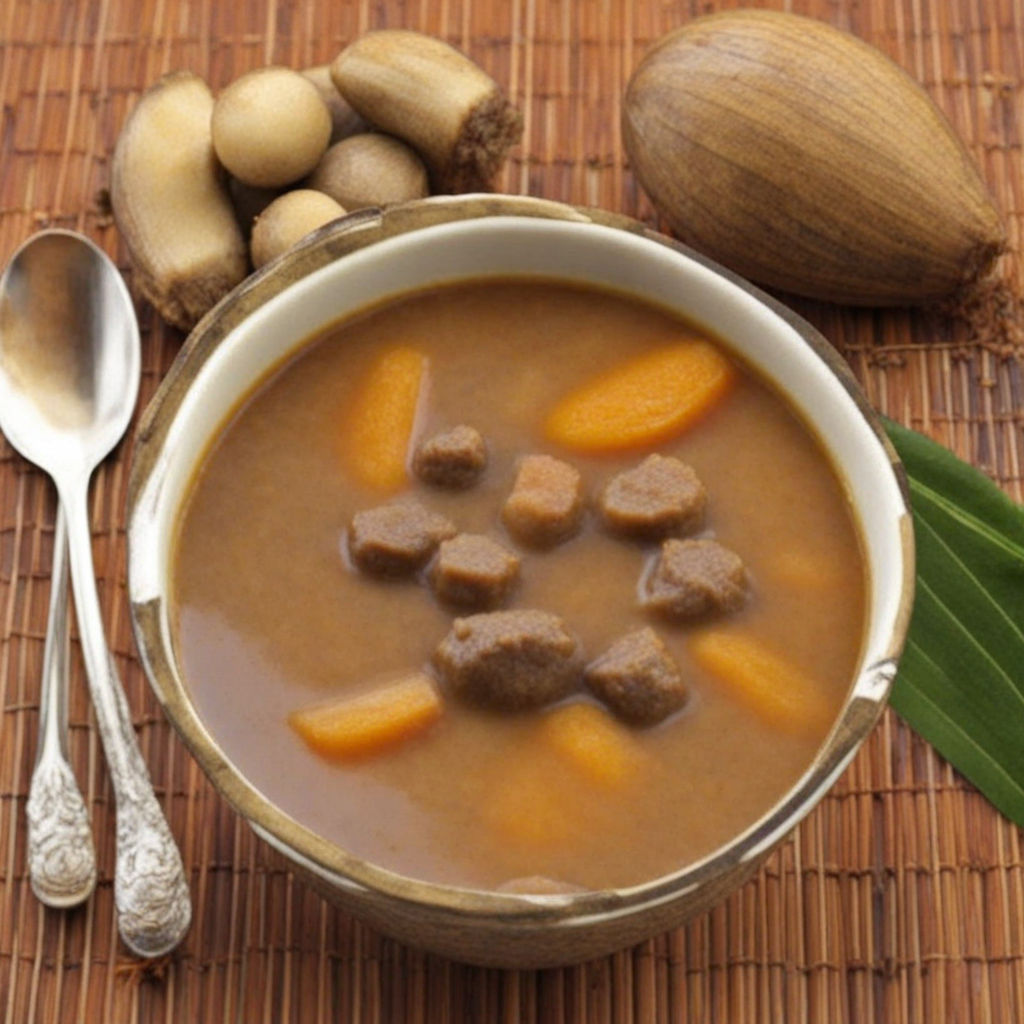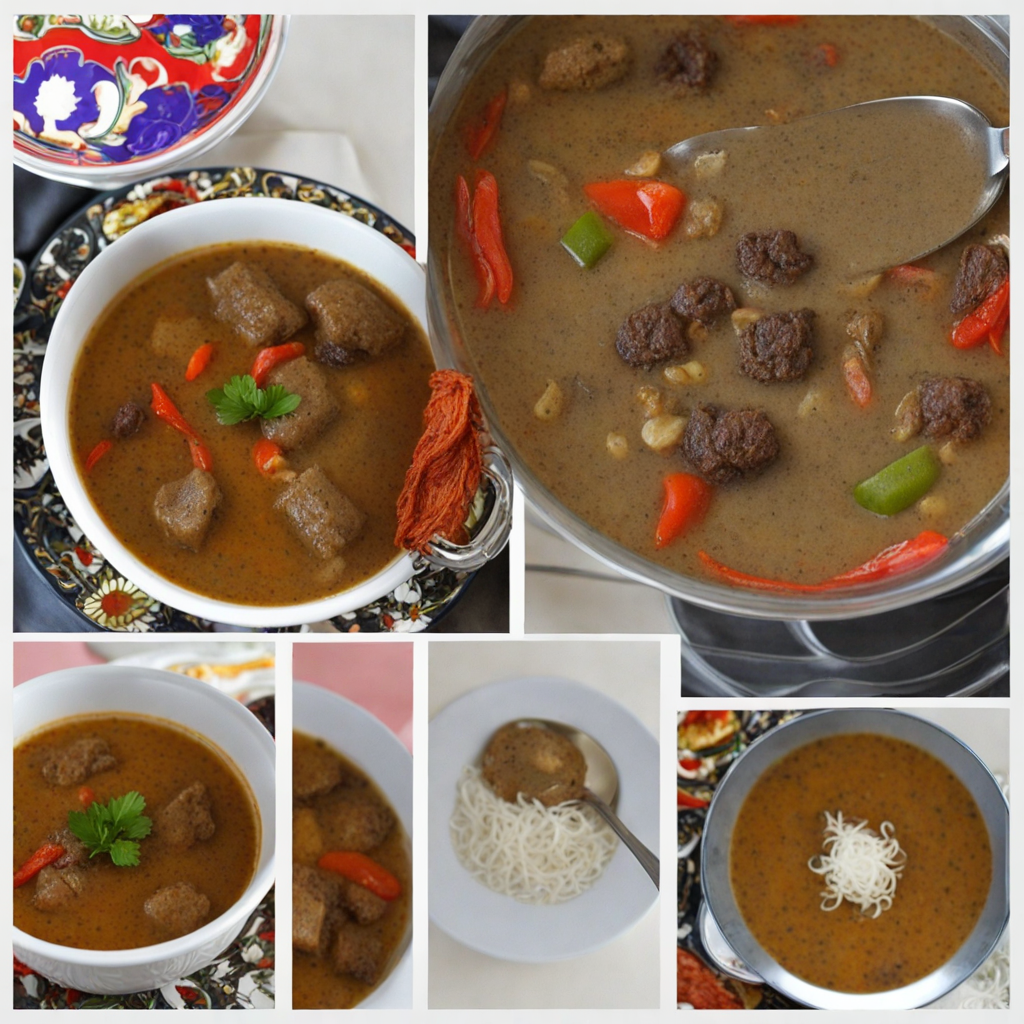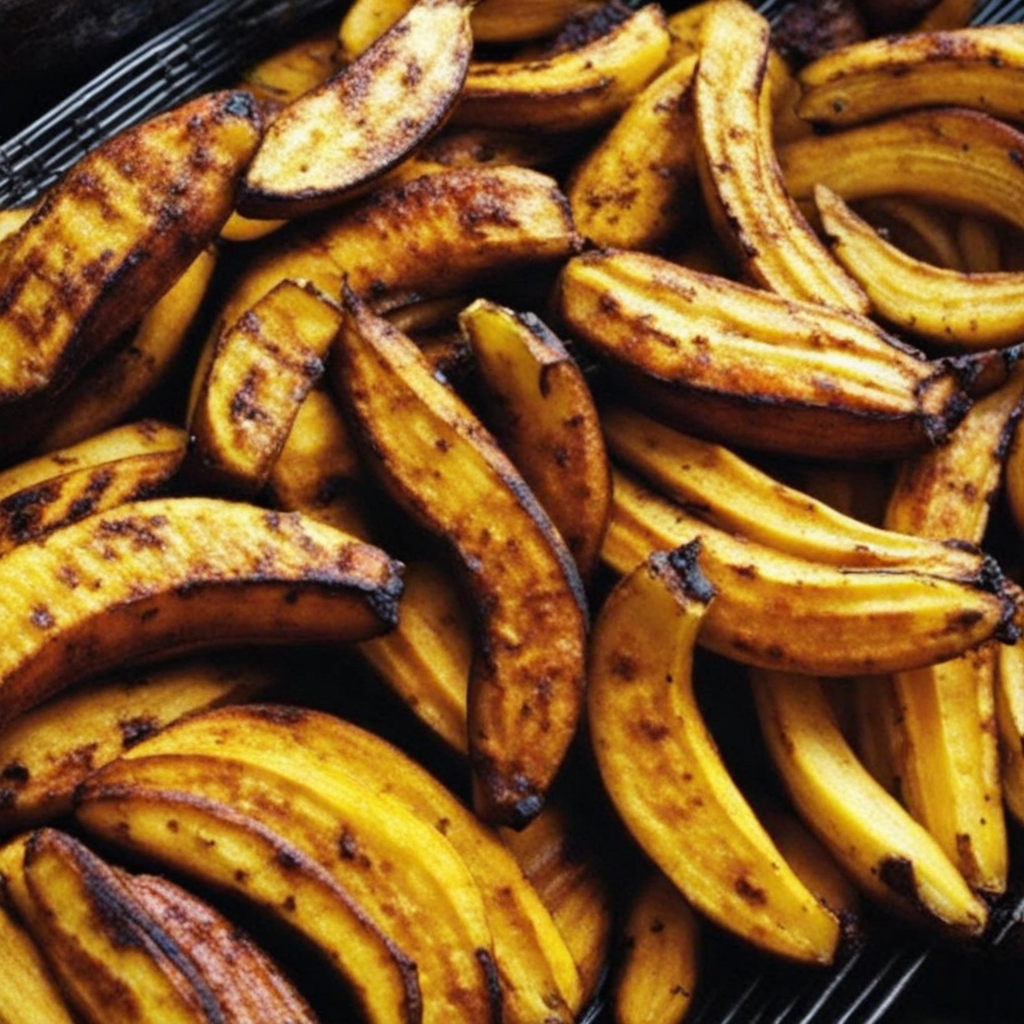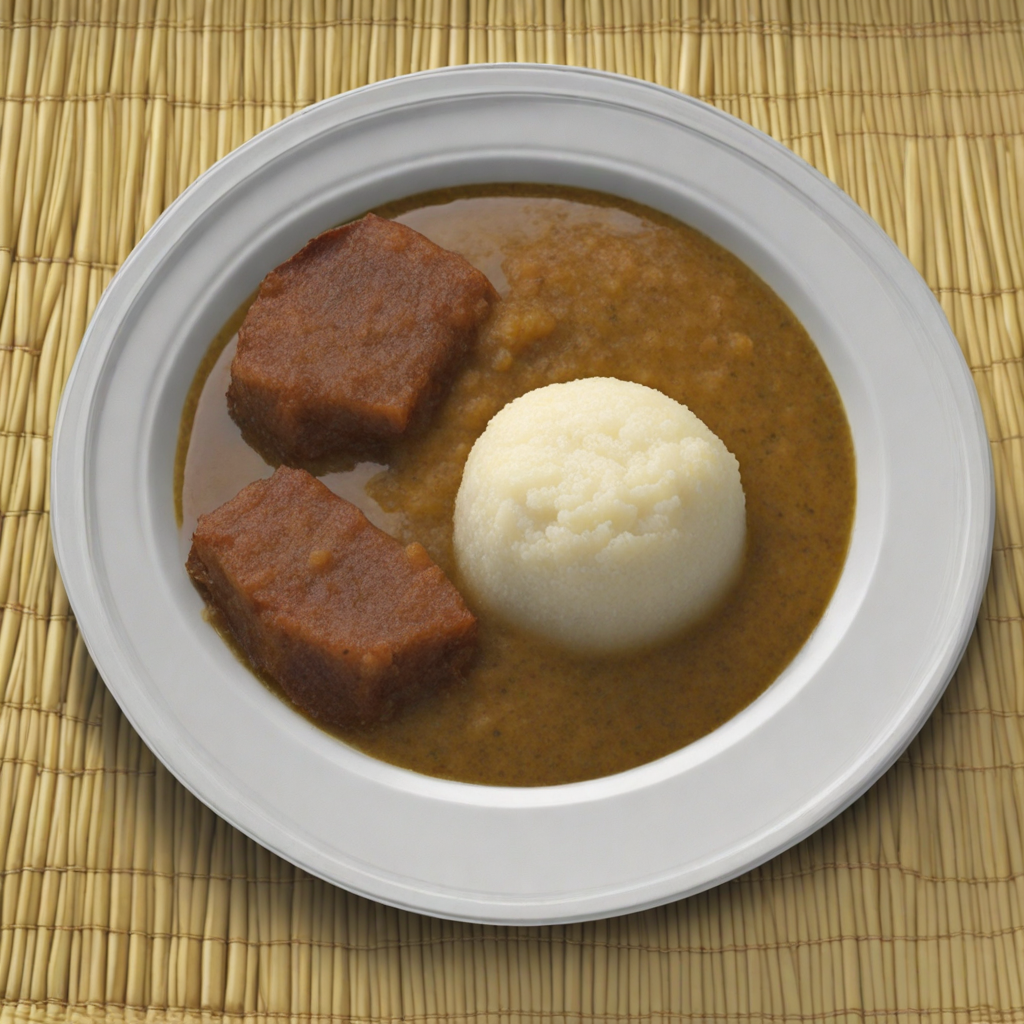Cassava Leaves Stew
Cassava Leaves Stew is a traditional dish from Equatorial Guinea that showcases the rich flavors and culinary heritage of Central Africa. The dish primarily features cassava leaves, which are harvested from the cassava plant—a staple crop known for its starchy tubers. The leaves are carefully washed and cooked to reduce their natural bitterness and enhance their nutritional properties. Typically, they are combined with a variety of ingredients such as ground peanuts or palm oil, which contribute a creamy texture and a nutty flavor, making the stew both hearty and satisfying. In addition to the cassava leaves and peanuts, the stew often incorporates proteins like fish, chicken, or beef, which are simmered to infuse the dish with depth and richness. Spices and aromatics such as onions, garlic, and chili peppers are also added, creating a harmonious blend of flavors that dance on the palate. The result is a savory and slightly spicy stew that offers a wonderful balance of earthiness from the leaves and richness from the accompanying ingredients. This dish is typically served with a side of rice or fufu, which helps to soak up the flavorful sauce and adds a comforting element to the meal. The vibrant green color of the cassava leaves, complemented by the warm, inviting hues of the stew, makes for an appealing presentation. Cassava Leaves Stew is not just a culinary delight; it's a reflection of the communal and family-oriented dining culture in Equatorial Guinea, often enjoyed during gatherings and special occasions, making it a dish worth discovering for anyone looking to explore new tastes.
How It Became This Dish
The History of Estofado de Hojas de Yuca: A Culinary Gem from Equatorial Guinea #### Origins Estofado de hojas de yuca, or cassava leaf stew, is a traditional dish that embodies the rich culinary heritage of Equatorial Guinea. This Central African nation, located on the west coast of the continent, comprises a mainland region (Río Muni) and several islands, including Bioko Island, where the capital, Malabo, is situated. The culinary traditions of Equatorial Guinea are deeply influenced by its diverse ethnic groups, including the Fang, Bubi, and Ndowe, each contributing unique flavors and cooking techniques. Cassava, or yuca, is a staple crop in many tropical regions, particularly in Africa. It is believed that cassava originated in South America, but it was introduced to Africa in the 16th century by Portuguese traders. Its ability to thrive in poor soils and withstand drought made it an essential crop for many African communities. As cassava became integrated into local diets, its leaves began to be recognized as a valuable ingredient, particularly in Equatorial Guinea. The preparation of Estofado de hojas de yuca utilizes the young, tender leaves of the cassava plant, which are rich in vitamins and minerals. Traditionally, these leaves are harvested, washed, and pounded or chopped finely before being cooked in a flavorful sauce. The dish often includes a variety of proteins, such as fish, chicken, or meat, and is typically served with rice or fufu, a starchy side made from cassava or plantains. #### Cultural Significance Estofado de hojas de yuca is more than just a dish; it is a symbol of communal identity and resilience for the people of Equatorial Guinea. The preparation of this stew often involves family gatherings where members come together to share labor, stories, and laughter. This communal aspect of cooking fosters strong family ties and cultural cohesion, reflecting the importance of food in social practices. In Equatorial Guinea, food is often intertwined with cultural rituals and celebrations. Estofado de hojas de yuca is served during significant occasions, such as weddings, religious ceremonies, and festivals. Its presence at these events highlights the dish's role in fostering community bonds and cultural heritage. The act of sharing a meal that has been prepared with care and tradition resonates with the values of hospitality and generosity that are central to the Equatorial Guinean ethos. Moreover, the dish’s nutritional value cannot be overlooked. With the increasing focus on food security and nutrition in developing countries, the role of cassava leaves as a source of protein and vitamins is gaining recognition. As such, Estofado de hojas de yuca represents a sustainable culinary choice, allowing communities to utilize local resources while promoting health and well-being. #### Development Over Time The evolution of Estofado de hojas de yuca reflects broader historical and social changes in Equatorial Guinea. Colonization by the Spanish in the late 19th century brought new ingredients and culinary influences to the region. Though the Spanish colonizers primarily focused on exporting resources, there was a culinary exchange that shaped local dishes. Ingredients such as tomatoes, onions, and spices were incorporated into traditional recipes, enhancing the flavor profile of Estofado de hojas de yuca. The post-colonial era brought about significant socio-political changes, which also influenced culinary practices. Following independence from Spain in 1968, Equatorial Guinea experienced a period of political instability. During these times, traditional dishes became even more significant as a means of cultural expression and identity. Estofado de hojas de yuca emerged as a source of comfort and continuity in a rapidly changing world. The dish served as a reminder of the rich cultural heritage that persisted despite external influences and challenges. As globalization progressed in the late 20th and early 21st centuries, Equatorial Guinea began to see a fusion of culinary traditions. The influence of international cuisine and the influx of immigrants brought new flavors and techniques to the local food scene. However, Estofado de hojas de yuca remained a steadfast favorite, revered for its deep-rooted cultural significance and comforting flavors. In contemporary Equatorial Guinea, efforts to promote local cuisine have gained momentum, with chefs and home cooks alike taking pride in traditional dishes. Food festivals and culinary events celebrate local ingredients and recipes, including Estofado de hojas de yuca, ensuring that the dish continues to be a vital part of the nation's culinary narrative. #### Conclusion Estofado de hojas de yuca is more than just a meal; it is a manifestation of Equatorial Guinea's rich cultural tapestry. The dish, with its origins rooted in local agricultural practices and communal traditions, represents resilience and a deep connection to the land. As it has evolved over time, Estofado de hojas de yuca has maintained its significance in both family gatherings and larger cultural celebrations. In a world increasingly influenced by globalization, the continued appreciation for traditional dishes like Estofado de hojas de yuca serves as a reminder of the importance of preserving culinary heritage. This beloved stew not only nourishes the body but also the soul, fostering community and cultural identity in Equatorial Guinea. As it is passed down through generations, Estofado de hojas de yuca remains a delicious testament to the enduring power of food as a cultural cornerstone.
You may like
Discover local flavors from Equatorial Guinea


